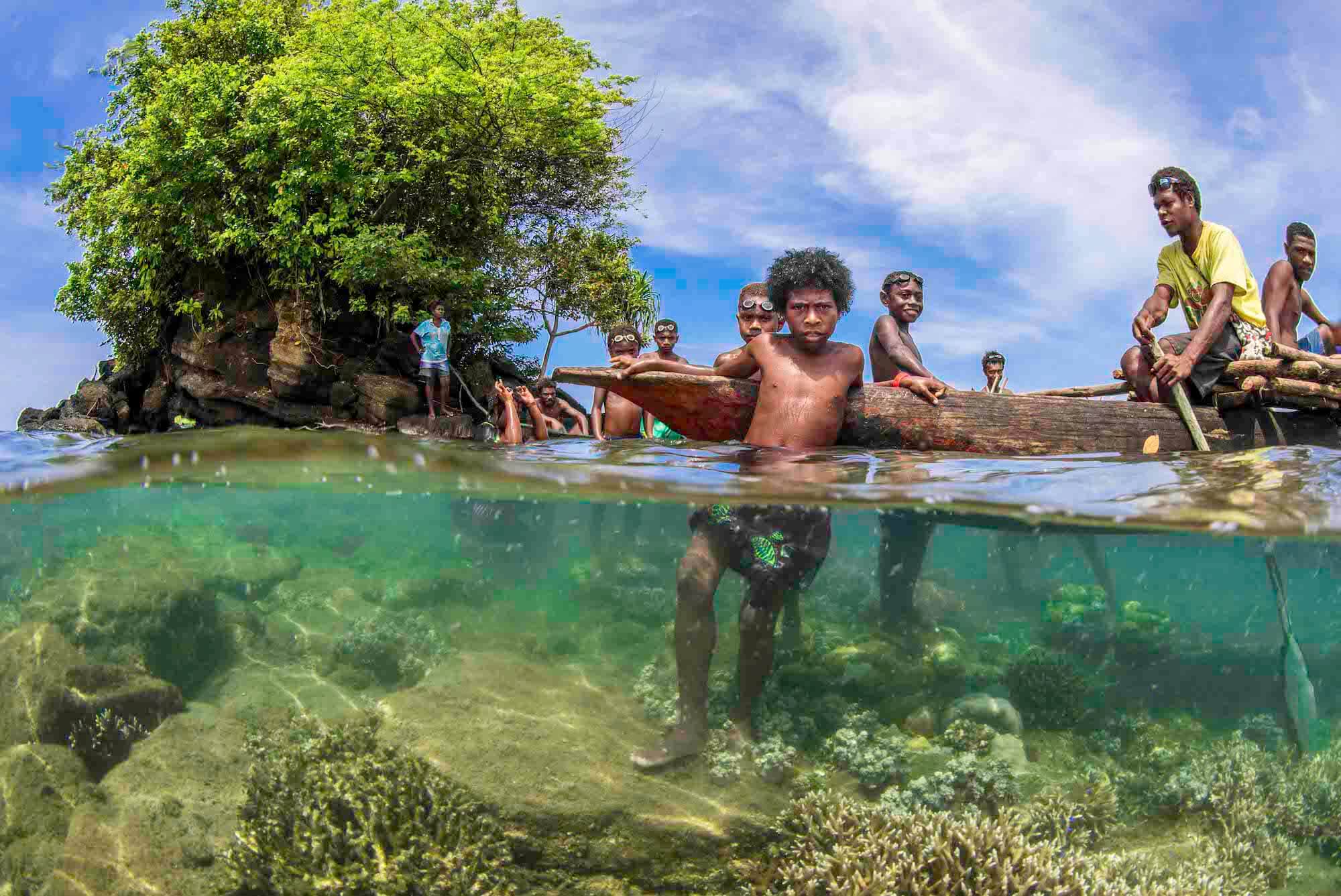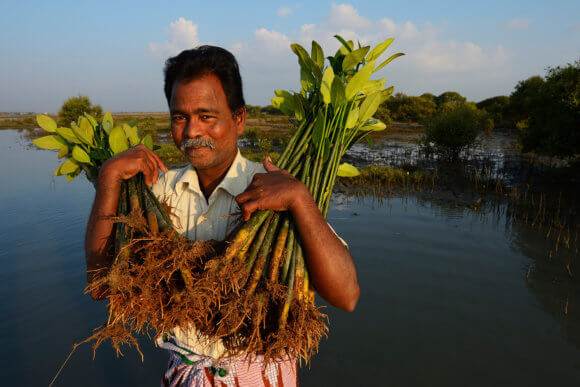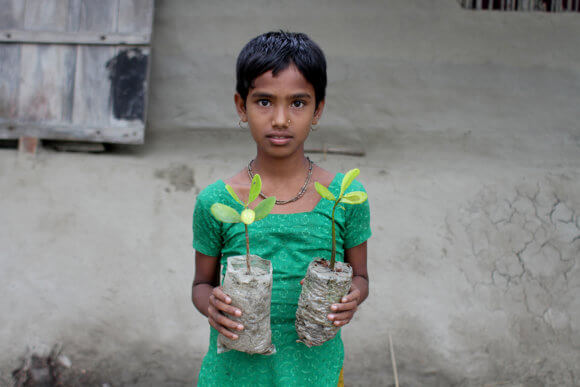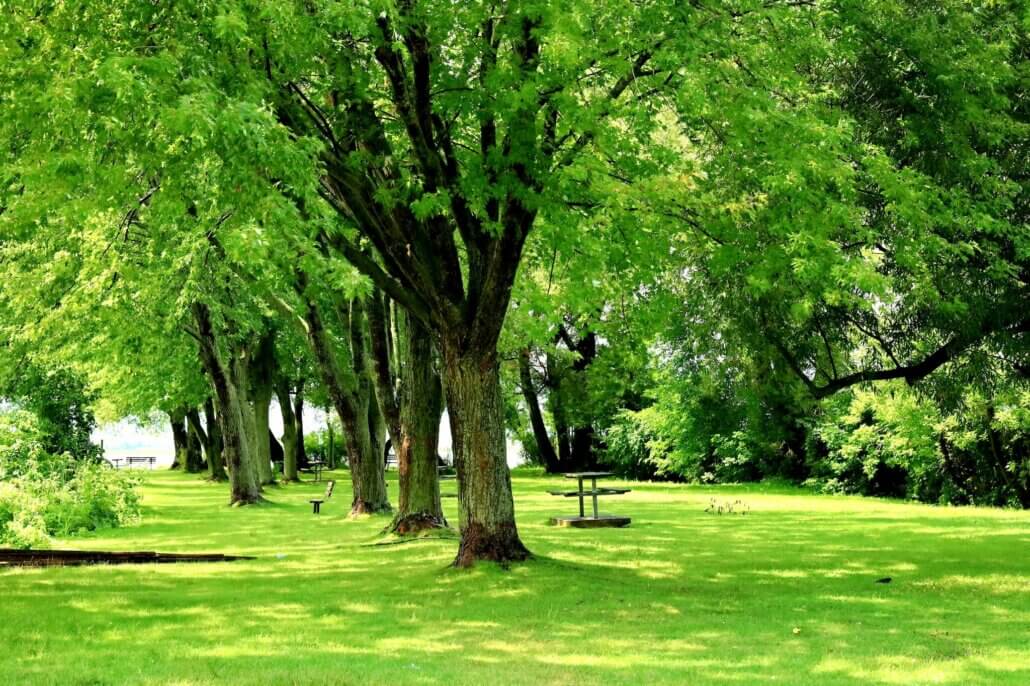Meet this Environmental Nonprofit Preserving Mangroves
Celebrating our Namesake

Mangrove trees are pretty amazing. They’re naturally flexible, tropical and sub-tropical plants that help other organisms thrive, and their unique root systems protect the shoreline from erosion and storm damage. Needless to say, they’re great for our planet, and we are honored to share their name. In honor of Earth Month, we’re sharing an interview with Alfredo Quarto (pictured below), Co-founder and International Program and Policy Director of Mangrove Action Project (MAP), an organization that we are proud to support. MAP’s work aims to boost awareness of the importance of mangroves with hands-on curriculum and community involvement.
*All photos courtesy of Mangrove Action Project. Caption for banner image: “Local boys gather in front of a small mangrove-associated outcropping along the coast of Papua New Guinea. Coastal ecosystems here rely on a community-based system of conservation and protection; the local people value their ecosystems and protect them as such.”
MW: How did Mangrove Action Project get started?

Alfredo: We started Mangrove Action Project when mangrove forests were widely considered swampy, mosquito-infested wastelands by governments and industries alike. We lost a lot of mangroves because of this short-sighted perception. When the 2004 tsunami hit the Indian nations, it was a slap in the face to people who thought that mangroves were not valuable. Climate change issues came into play, basically bringing more awareness to mangroves because of their proficiency for carbon sequestration.
Local communities that lived near mangrove forests knew the value of the trees to their livelihood, medicine and protection. In 1992, Mangrove Action Project was founded to further publicize the importance of mangroves for those locals and the world.
MW: Why are mangroves so important to our planet?
Alfredo: Mangroves do many things. They can sequester five times more carbon than any other tree species and then store that carbon for hundreds, if not thousands, of years. For world fisheries, they are vital because they are nursery grounds. Mangroves also help protect coasts from rising sea levels, protect the coral reef from seagrass siltation from erosion runoff, and filter out heavy metals.
MW: You mentioned we’ve lost a lot of mangroves. Can you share more about that?
Alfredo: Yes, we’ve already lost over half of the mangroves. Most of the loss has been due to shrimp farming, of all things. It’s still one of the main drivers today, along with tourism, port construction, logging, and urban and agricultural expansion. Our mission is to conserve what remains and restore the mangroves that have been lost.
MW: How did you get involved with mangrove awareness?
Alfredo: I had been an activist for many years, but I wanted to get away from that part of my life and do more photojournalism. In 1992, I went to a small village on the coast of Southern Thailand and saw the results of the shrimp farming expansion—the fear it was creating for the local people who were opposing it and trying to protect the mangroves. I wrote an article about it for Cultural Survival Quarterly Magazine, which depicted the problems in Southern Thailand and around the world. We showed the mangrove loss and the communities that had been displaced or forced to leave over the years because of it.
MW: Have you seen the perception of mangroves change?
Alfredo: We have seen a huge increase in restoration attempts as people realize how important mangroves are for coastal conservation and protection. When we took a look at the kind of restoration that was going on, what we found was an 80% failure rate because people were planting mangroves by hand in the wrong places—like mud flaps which are open and easily available. The problem is, mangroves often don’t survive well in certain conditions. The restorations were also focused on merely one variety: the red mangrove. That is an important species, but it isn’t the only one. In Thailand and Indonesia, there can be 30 to 40 species of mangroves, and they support a wide, more varied and biodiverse ecosystem.
We’re trying to help communities avoid the pitfalls of the traditional method of hand planting by using a method called Community-Based Ecological Mangrove Restoration (CBEMR). We provide workshops and training for local people and scientists in Africa, Asia and Latin America so they can become more familiar with the process of restoring the natural habitat and hydrology, which is very important for mangrove seedlings.
MW: What draws you to mangroves personally?
Alfredo: I think it’s the fact that mangroves have such an important function on the earth and they’ve been destroyed so rapidly. I see so much destruction when I travel around the world, and we’re losing contact with how important our resources are. I think it’s exciting that, after all these years, people are finally starting to do something about this loss.
To learn more about mangroves and the Mangrove Action Project, visit their website.

A Certified B Corp, Mangrove is a woman-owned website design and development company with a diverse, talented team distributed around the globe. We’ve been building websites since 2009 that amplify the work of change-making organizations and increase the competitive power of businesses owned by historically marginalized people.
If you found this post helpful, subscribe to our monthly newsletter for notice of future posts and other news from us.





